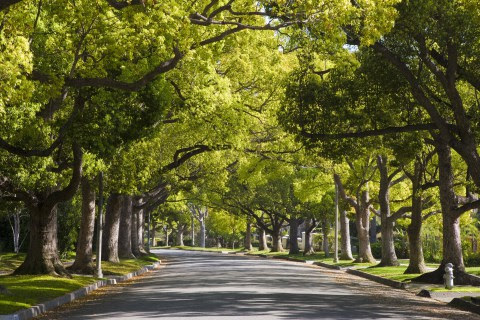By Tom Gilbert, Co-Executive Director, New Jersey Conservation Foundation
New Jersey is the most densely populated and developed state, with an average of more than 1,200 residents per square mile. It’s the only state in which every county is deemed “urban” by the U.S. Census Bureau.
Yet, 40% of this state we’re in – about 2 million acres – is covered by forest. Of those 2 million acres, half are publicly owned as state parks, forests, natural areas and wildlife management areas.
Our million public forested acres are a priceless resource, providing clean air, clean water, defense against climate change, flood control, diverse wildlife habitat, and outstanding places for outdoor recreation.
But public ownership of these forests isn’t enough to ensure that their ecological benefits will be available forever. Forests face many threats including overabundant deer, invasive plants, insect pests and pathogens.
And there has been heated controversy over several forest and wildlife management projects on state and local lands, most recently the devastation of 21 acres of intact, mature forests and protected wetlands in the state’s Glassboro Wildlife Management Area (WMA) to create habitat for American woodcock, a game bird species.
It’s clear that thoughtful and comprehensive planning and rules are needed to make sure New Jersey’s forests are protected and managed to maximize their benefits for current and future generations.
About a year ago, State Sen. Bob Smith (D-17) – chairman of the Senate Environment and Energy Committee – turned to four organizations with differing views on forest management to help the state develop a framework for stewarding public forests.
The Forest Stewardship Task Force’s mission: to identify ways in which the state can best manage its forests to fight climate change, prevent forest fires, improve ecosystems, and protect soil and water quality, among other things.
Task Force co-chairs were Eileen Murphy from New Jersey Audubon, Andy Bennett from the New Jersey Forestry Association, Anjuli Ramos-Busot from the New Jersey Chapter of the Sierra Club, and myself.
A major challenge was to seek and find broad agreement around issues relating to management of public forests. The Task Force held meetings between April and December of last year involving hundreds of participants and many hours of discussion. Anyone with an interest in forests was invited to offer their opinion.
I’m happy to report that although stakeholders didn’t see eye-to-eye on every issue, we found significant common ground in our belief in the immense potential of forests to protect and improve the quality of life in New Jersey. The co-chairs reached consensus on 16 recommendations that were supported by two-thirds of all participants and presented to a joint meeting of the Senate and Assembly environment committees in February.
Several recommendations were informed by the state’s Global Warming Response Act goal of reducing carbon emissions by 80% (from 2006 levels) by 2050.
As a 2020 Global Warming Response Act report notes, natural “carbon sinks” like forests are invaluable for their ability to sequester carbon to help offset greenhouse gas emissions. The New Jersey Department of Environmental Protection (DEP) is counting on maintaining the over 8 million metric tons of carbon stored in our forests, wetlands and agricultural soils and increasing carbon sequestration in these lands to meet state climate goals.
One key Task Force recommendation was for the DEP to designate certain forestlands a “carbon reserves.” The goal would be to protect mature forests for their carbon benefit, and allow these forests to become the old growth forests of tomorrow.
Another important priority is to establish formal rules governing any forestry plans and other habitat alterations on public lands – a need made abundantly clear by DEP’s failure to notify or engage the public before eliminating 21 acres of forests in Glassboro WMA.
Other recommendations to the State Legislature include:
- Directing the DEP to initiate and conduct a statewide planning and mapping process for public forestland. This would include better protecting resources historically and culturally significant to indigenous people;
- Identifying areas where active management is needed to address ecological objectives;
- Revitalizing the Natural Areas Program and designating new natural areas;
- Prohibiting the DEP from including commercial profit from timber operations as a goal in any forest management plan for public land;
- Continuing efforts to address the impacts of invasive non-native species, including plants, animals, insects, pathogens and microorganisms;
- Reducing deer populations in public forests to ecologically sustainable levels, with guidance from a new Science Advisory Panel;
- Identifying sites where degraded forests should be restored, and where new forests should be established in places with no previous tree cover;
- Continuing the use of fire as a forest management tool through prescribed burning.
Like any report based upon many diverse viewpoints, this one isn’t perfect. For instance, there’s no universally agreed-upon definition of ecological integrity in a forest. That issue will need to be resolved through the forest planning process with input from scientific experts and the public.
But as an oft-repeated Chinese proverb observes, a journey of a thousand miles begins with a single step.
The Forest Stewardship Task Force’s recommendations represent a significant first step forward. On the journey ahead, New Jersey will need sound legislation, robust public processes to define ecological goals and oversee forest management plans, and increased funding to ensure that the DEP can do the work needed.
In the end, it will all be worthwhile if New Jersey’s one million acres of public forests are protected and managed to provide the greatest possible benefits for people, wildlife and our climate.
To read the report, go to bit.ly/42aefH1.
For more information about preserving New Jersey’s land and natural resources – including forests – visit the New Jersey Conservation Foundation website at www.njconservation.org or contact me at [email protected].


